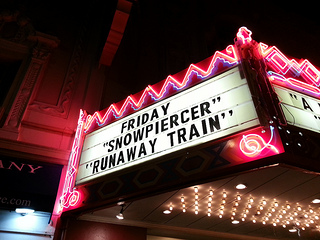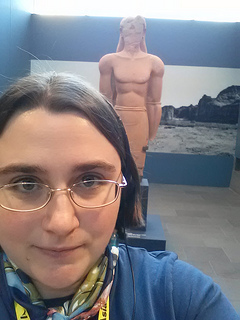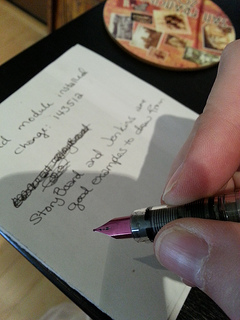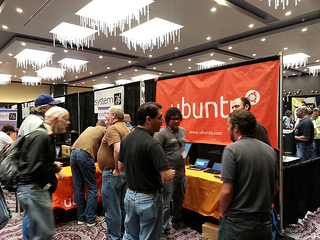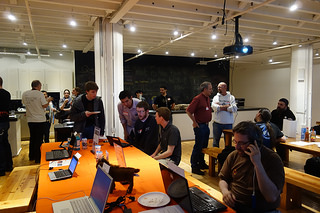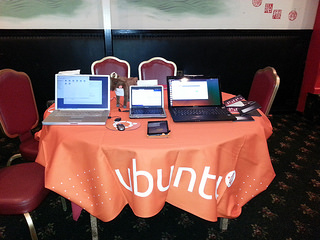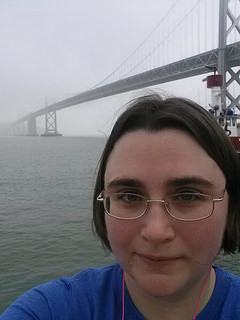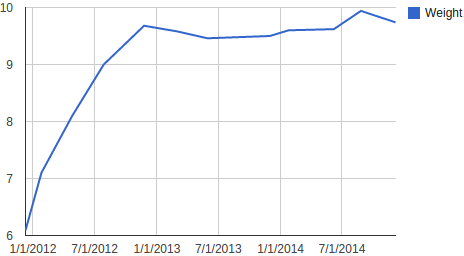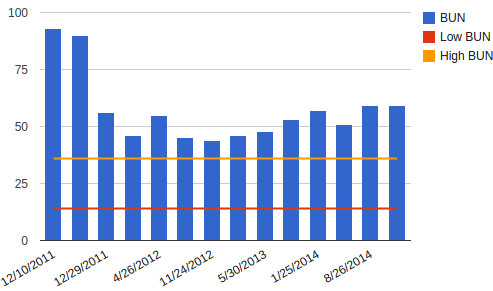I’ve been home for a week now, and strongly resisted the temptation to go complete hermit and stay home to work furiously on my personal projects as the holidays brought several Day Job days off. On New Year’s Eve MJ and I went over to ring in the new year with my friend Mark and his beautiful kitty. On Friday I met up with my friend mct to see Snowpiercer over at Castro Theater. I’m a huge fan of that Theater, but until now had only ever gone to see hybrid live+screen shows related to MST3K, first a Rifftrax show and then a Cinematic Titanic show. It was a nice theater to see a movie in, they make it very dark and then slowly bring up the lights at the end through the credits to welcome you back to the world. A gentle welcome was much needed for Snowpiercer, it was very good but very intense, after watching that I didn’t have it in me to stick around for the double feature (particularly not another one with a train!).
I have watched even less TV than usual lately, lacking time and patience for it (getting bored easily). But MJ and I did start watching Star Trek: Voyager. It turns out that it’s very Classic Trek feeling (meet new aliens every episode!) and I’m enjoying it a lot. I know people really love Deep Space Nine, and I did enjoy it too, but it was always a bit too dark and serious for my old fashioned Trek taste. Voyager is a nice journey back to the Trek style I love, plus, Captain Janeway is totally my hero.
This past Saturday MJ and I had a relaxing day, the highlight of which was the Roads of Arabia exhibit at the Asian Art Museum. It’s one of my favorite museums in the city, and I was really excited to see a full exhibit focused on the middle east, particularly with my trip to Oman on the horizon. It also inspired me for my trip, I’d been advised that it’s common to buy frankincense while in Oman, but I already have what seems like a lifetime supply, I’m now thinking I might try to find a pretty incense burner.
Our wedding photos have finally gotten some attention. It’s been over a year and a half and the preview of photos has been limited to what our photographer shared on Facebook. Sorry everyone. I’ve mostly gone through them now and just need to take some time to put together a website for them. Maybe over this weekend.
My book has also seen progress, but sometimes I also like to write on paper. While going through my huge collection of pens-from-conferences I decided that I write notes enough to treat myself to a nicer pen than these freebies. Through my explorations of pens on the internet, I came across the Preppy Plaisir fountain pen. I’d never used a fountain pen before, so I figured I’d give it a shot. Now, I won’t forsake all other pens moving forward, but I do have to admit that I quite like this pen.
I did manage to catch up on some personal “work” things. Got a fair amount of Ubuntu project work done, including securing a venue and sponsorship for an upcoming Ubuntu Global Jam here in San Francisco and working out travel for a couple upcoming conferences. Also have almost completed the migration of websites and services from one of my old servers to a bigger, cheaper one, and satisfied the prerequisite of re-configuring my monitoring and backups of all my servers in preparation for the new one. Now I’m just waiting for some final name propagation and holding out in case I forgot something on the old server. At least I have backups.
Work on Partimus has been very quiet in recent months. There’s been a movement locally to deploy ChromeBooks in classrooms rather than traditional systems with full operating systems. These work well as many tools that teachers use, including some of the standardized testing tools, have moved to online tools. This is something we noticed back when we were still deploying larger labs of Ubuntu-based systems as we worked hard to tune the systems for optimal performance of Firefox with the latest Java and Flash. Our focus now has turned to education-focused community centers and groups who are seeking computers to do more application and programming focused tasked, I hope to have news about our newest projects in the works soon. I did have the opportunity last week to meet up with an accountant to go over our books, working pro-bono I was thankful for his time and ability to confirm we’re doing everything correctly. I’m not fired as Treasurer, hooray!


